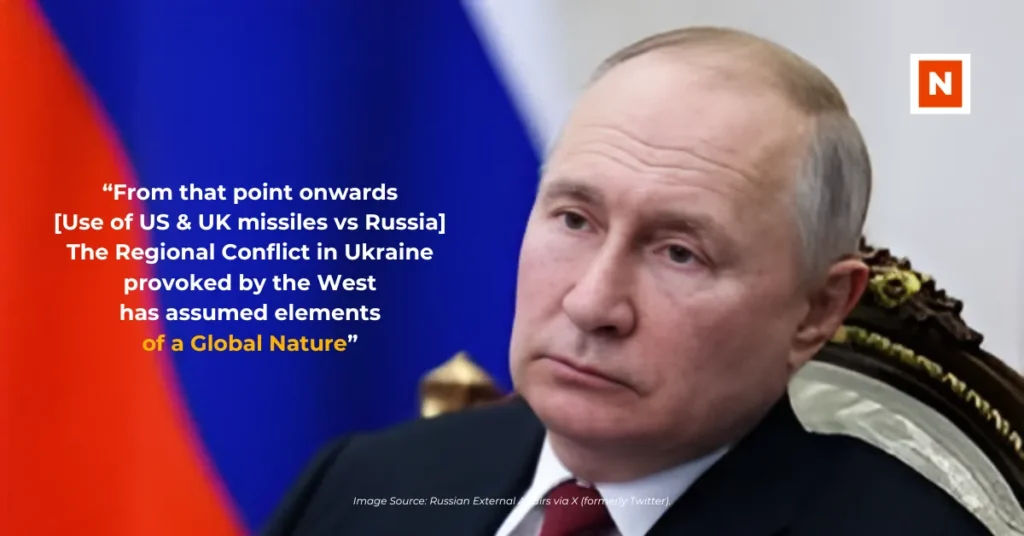ICBM missile strikes have become a new and alarming chapter in the ongoing Russia-Ukraine conflict. On Thursday Russia test-fired a missile, “Oreshnik”, against the Ukrainian city of Dnipro. This missile is considered an RS-26 Rubezh intercontinental ballistic missile system development. Although the rocket depicted conventional warheads instead of nuclear ones, the employment of the missile raised a dangerous escalation in the war.
The Oreshnik ICBM missile system is also equipped with hypersonic technology with multiple independently targetable reentry vehicle technologies (MIRVs) for accuracy and destruction. MIRVs allow one missile to carry several warheads, each capable of targeting a different location. This feature makes the Oreshnik especially dangerous because even modern air defense systems cannot withstand it.
Russia’s Justification for the ICBM Missile Strike

Russia justified the strike as a response to Ukraine’s use of long-range Western-supplied missiles including the US origin’s ATACMS and the UK-French origin’s Storm Shadow. Russian President Vladimir Putin said the strike was a test drive of the Oreshnik missile and stated that it was launched to strike military and industrial facilities. However, according to the reports, the strike injured two citizens, and affected the structures such as a rehabilitation center in Dnipro city.
Putin stressed that Russia would keep using advanced weaponry if it felt threatened by NATO members who support Ukraine. He said, “We consider ourselves entitled to use our weapons against military facilities of those countries that allow their weapons to be used against us.” This statement has increased the emergence of the aggravation of the conflict in the consciousness of Western powers.
Implications of Using ICBM Missiles in Combat

ICBM missiles like the Oreshnik are most often referred to not as instruments of conventional warfare, but as means to ensure the existence of nuclear deterrence. Their use in the Ukraine conflict should raise questions as to the nature of contemporary wars. In the past, ICBM missiles were designed to prevent wars with the help of the policy of Mutual Assured Destruction (MAD). However, Russia’s use of this technology in combat could signal a shift away from the traditional deterrence principle.
Analysts state that ICBM missiles with MIRVs could provoke a preemptive war because enemies aim to eliminate such weapons before deployment. This development brings a new level of unpredictability in the world which is struggling with the events of the war in Ukraine.
Global Reactions and Ukraine’s Response

Ukraine’s President Volodymyr Zelensky called the use of the Oreshnik missile a “severe escalation” in the war with Russia. He has claimed that Russia is using Ukraine as a “training ground” where it tests out the new weaponry. Ukraine has declared plans to continue the anti-Russian campaign, using its long-range Western-supplied missiles to attack legal military targets in Russia.
The United States, NATO, and its other allies have condemned the missile strike as a reprehensible act. This kind of interaction with the Oreshnik was described by Pentagon officials as a reckless escalation and reaffirmed their commitment to supporting Ukraine. The world is worried that such actions can be followed by more actions threatening aggression, including the potential use of nuclear weapons.
Conclusion
ICBM missile strikes, the action Russia performed with the Oreshnik in Ukraine, is one of the serious and dangerous steps in the war. This new chapter not only endangers regional stability but also creates a world concern about the use of advanced and potential nuclear strike weapons. As tension escalates, the international community hopes for the best before the conflict escalates to uncontrollable levels.

















